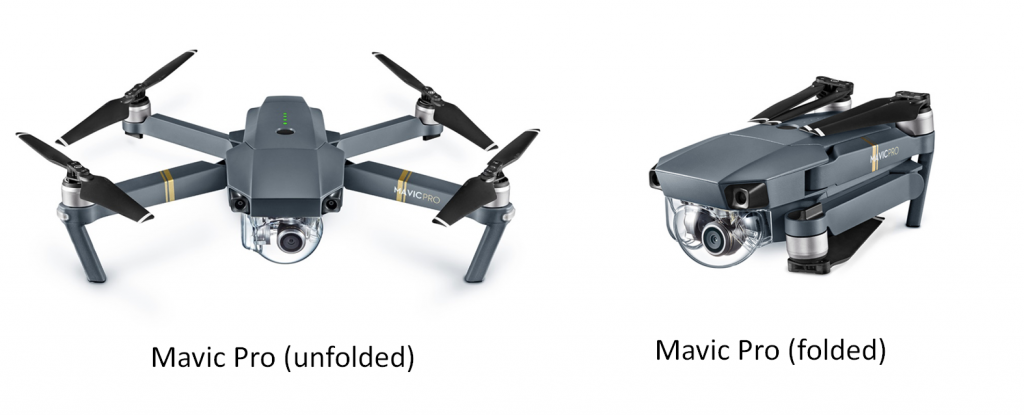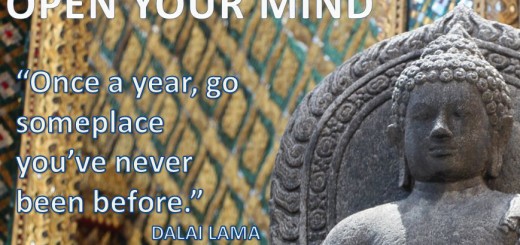Game of Drones – A Comprehensive Drone Comparison Review by the Five Adventurers
Game of Drones – A Comprehensive Drone Comparison Review by the Five Adventurers
 DJI Phantom 4 vs. DJI Mavic Pro vs. GoPro Karma.
DJI Phantom 4 vs. DJI Mavic Pro vs. GoPro Karma.
Introduction
A few weeks ago, after many hours of research weighing up the pros and cons of the best drones available on the market, we bought the DJI Phantom 4!! This was an excellent choice, because up until a few weeks ago, we rated as it as being the best one for our needs in terms of budget, picture quality, convenience, ease of use including the automation features, such as obstacle avoidance and return to home, that are ideal for amateur flyers like us. Although important, the price was not the most important factor for us, as travel bloggers with three young kids, portability and convenience were huge consideration points, and at the time, the Phantom 4 was by far the best choice. However, just a few days after our purchase, the GoPro team announced the launch of a foldable, more portable and convenient GoPro Karma drone… and a week later DJI reacted to the threat on its market dominance by announcing their new, also foldable, Mavic Pro… Whatttttt!!!
A feeling of dissatisfaction spawned as we spent over £1k on the latest model only to find out it got superseded by a newer, possible far superior model at a cheaper price!! If these newer drones are good as their claims, it would inevitably decline the value of our purchase overnight, why would anyone buy the more expensive, less convenient, Phantom 4? Luckily we managed to return our purchase for a full refund. We could now go back to the drawing board to analyse the trade-offs. I hope this is useful for someone deciding to purchase their first professional drone. I have summed up the key features to consider and compared the two new contenders (GoPro Karma, DJI Mavic Pro) with the Phantom 4 in the table below. It aims to gathers the facts in one place and will hopefully help you to reach a decision. Please comment and like this page if it does as the feedback is important to us.
Disclaimer: We have not been paid by any vendor to do this review.
| DJI Phantom 4 | DJI Mavic Pro | Go Pro Karma | Winning Order | |
| Aircraft Weight | 1380 g | 743 g (with gimbal cover) | 1006 g | Mavic Pro
Karma Phantom 4 |
| Foldable | No | Yes | Yes | Mavic Pro/Karma |
| Aircraft
Size (excluding propellers) |
Fixed
Diagonal 350mm H = 193mm
|
Folded:
L = 198mm, W = 83mm H = 83mm
Unfolded: Diagonal 335mm
|
Folded:
L = 365mm W = 224mm H = 90mm
Unfolded: L = 303mm W = 411mm H = 117mm
|
Mavic Pro
Karma Phantom 4 |
| Max Speed | 20 m/s
72km/h (45mph) |
17.88 m/s
64km/h (40mph) |
15 m/s
54km/h (35mph) |
Phantom 4
Mavic Pro Karma |
| Max wind conditions | 10m/s
36km/h (22mph) |
10m/s
36km/h (22mph) |
10m/s
36km/h (22mph) |
Same |
| Max ceiling | 6000m | 5000m | 4500m | Phantom 4
Mavic Pro Karma |
| Max transmission distance on Remote Control | 5km | 7km
|
3km | Mavic Pro
Phantom 4 Karma |
| Max transmission distance on Wifi mode | No wifi mode available | Wifi only mode
80m(Distance), 50m(Height) Note: max speed limited to 14km/hr |
No wifi mode available | Mavic Pro
|
| Fly time | 28 mins | 27 mins | 20 mins | Phantom 4
Mavic Pro Karma
|
| Removable Camera | No | No | Yes (not included)
Compatible Cameras: Hero 5 Black / Session Hero 4 Black / Silver |
Karma
|
| Gimbal/ Stabilisation | 3 axis Gimbal | 3 axis gimbal | 3 axis gimbal | Same |
| Removable Gimbal | No | No | Yes – Removable (included) | Karma |
| Electronic Stabilisation | No | No | Depends on camera.
Hero 5 – Yes |
Karma |
| Camera Range of Motion | Pitch -90 to +30 degrees | -90 to +30 (pitch )
0 or 90 degrees (roll) |
-90 to 0 degrees (pitch) | Phantom/Mavic |
| Camera Spec | 1 / 2.3” CMOS 4K, 12MP | 1 / 2.3” CMOS 4K, 12MP | Depends on camera
Hero 5: 4k, 12MP |
Depends on what camera is used with Karma
If Hero 4, Then all seem to be 12MP, 4K |
| Lens / Field of View | 94 degree, 20 mm (35mm format eqiv) , f/2.8,
focus at infinity |
7 8.8 degrees, 28mm (35mm format eqiv), f2.2
Distortion < 1.5% Focus 0.5m – Infinity |
Depends on camera
Wide angle GoPro 5 has linear FOV correction |
Depends on what camera is used with Karma
FOV on Phantom is larger than Mavic Pro making it better for landscape photography.
|
| Can you see propellers when travelling at fast speeds | YES – Sometimes | Hardly | No | Karma,
Mavic Pro Phantom 4 |
| Camera Modes
ISO Range |
TBC | TBC | Depends on Camera. | |
| Forward Vision System
Obstacle sensory range |
0.7m – 15m
Detectable range 15m – 30m
Operating Environment: Surfaces with a clear pattern and adequate lighting (> 15 lux) |
Forward Vision System Precision measurement range:
0.7m – 15m
Detectable range 15m – 30m
Operating Environment: Surfaces with a clear pattern and adequate lighting (> 15 lux) |
N/A | Mavic / Phantom 4 |
| Downward Vision system
(altitude and range) |
0-10m | Downward Vision system 0.3-13m | N/A | Mavic
Phantom 4 |
| Satellite positioning | GPS/GLONASS | GPS/GLONASS | YES | Same |
| Return to Home Feature | Yes | Yes | Yes | Same |
| Operating freq | 2.4 GHz to 2.483 GHz | 2.4 GHz to 2.483 GHz
& Wifi |
2.4 GHz | Mavic Pro
Phantom 4 Karma |
| Controller weight | Controller without mobile device
X g (TBC) |
Controller without mobile device
Y g (TBC) |
Controller comes with screen.
Screen Size (127mm) Resol 720P Battery life 4 hours Weight 625g |
|
| Mobile Device mountability | Mobile Device Mountable (phone size – YES
Tablet Mountable – YES |
Mobile Device Mountable (phone size – YES
Tablet Mountable – NO |
Mobile Device Mountable (phone size – NO
Tablet Mountable – NO
However the Karma controller has a built in screen |
Phantom 4,
Mavic Pro
|
| Obstacle Avoidance | Yes | Yes | No | Mavic Pro
Phantom 4 |
| Active tracking
Follow Feature |
Yes | Yes | No | Mavic Pro
Phantom 4 |
| Picture / Selfie
without controller |
No | Yes
With Gesture Control |
No | Mavic Pro |
| Wifi mode without controller | NO,
But can connect Phone, Tablet using cable |
Yes. You can pair with smartphone.
There is a Switch that enables you connect via tablet/mobile and fly without the controller |
NO | Mavic Pro |
| Automation features | Good | More intelligent flight modes than the Phantom 4. | Limited | Mavic Pro
Phantom 4 Karma |
| Obstacle avoidance | Yes | Yes | No | Mavic Pro / Phantom 4 |
| Visual Positioning System | Yes | Yes | No | Mavic Pro / Phantom 4 |
| Battery Weight / Capacity / Energy | 462g
5350mAh
|
LiPo 3S
240g 3830 mAh |
545g
5100mAh
|
Depends |
| Battery Voltage / Energy | 15.2V
81.3 Wh |
11.4V
43.6 Wh |
14.8 V
75 Wh |
Depends |
| Charger | 17.4V
100W |
13.05V,
50W |
TBC | Depends |
| Carry Case | Large | Small
Can be carried in a small bag. |
Medium
Backpack case available |
Mavic Pro
Karma Phantom 4 |
| Indicative price | £1200, but is likely to be reduced in coming weeks | £1000 | £750 without camera
But does come with the removable gimbal |
Pictures
Actual Drone
Remote Controllers
Carry Cases:
Why Mavic Pro over the Phantom 4?
Although we had thought the Mavic Pros announcement would come a lot later in 2017, DJI had strategically brought it forward after the announcement of the Go Pro Karma. The performance and folding capability of the DJI Mavic Pro is really impressive; the mechanism allows the folding of the arms and propellers so the aircraft folds to the size of a bottle. How did the engineers at DJI manage get the performance on par with one of its best models, the Phantom 4, yet make it considerably smaller and cheaper? With doc being an aerospace engineer, he says the answer lies in weight. Weight massively impacts performance of an air vehicle. A lighter air vehicle not only demands less power, it also requires less structural strength which further amplifies its advantage. As a result, it usually means lighter airframe structures, motors and battery, which generally makes it a lot smaller and less expensive. Also advancement in computer technology (eg processors, memory) also leads to greater packaging and power efficiency saving both space and energy.
To summarise the advantages of the Mavic Pro compared to the other two drones.
- More compact, lightest, and possibly the easiest to carry.
- The Mavic Pros controller is smaller and has an increased range of up to 7km vs 5km and 3km for the Phantom 4 and Karma.
- The Mavic Pro Controller is not only smaller, it has a LCD to display basic flight info, whilst the Phantom 4 controller has no LCD.
- The Mavic pro can be paired with a mobile device; and if you and wanted to do some low range aerial photography, the Mavic Pro can be controlled entirely with the mobile device via WiFi without the need of a controller (max range 80m and 50m altitude in this mode). There’s a control switch on the drone to allow the user to choose between Wi-FI and RC transmission mode. This is a massive advantage for us especially when we plan to travel lite with the minimum amount of luggage.
- The automation features on the Mavic is superior to that on the Phantom 4 and Karma.
- Can use gesture control to take selfies which cannot be done on the Phantom 4 or the Karma. However, we do suspect software upgrades to enable some of these feature.
- The carrying of the Mavic Pro is the easiest as both the drone and the controller is smaller than both the Phantom 4 and the Karma. Also, there is no need to remove the propellers, on the Mavic Pro; the propellers also fold to make it more compact.
Despite its superiority in most areas, these are the following areas in which potential savvy buyers may want to consider, compared to the Phantom 4:-
- Camera performance
- There is a new camera in the Mavic Pro, although the sensor size and 12MP remains unchanged, the unit is significantly smaller than the Phantom 4 . Users have reported images to be marginally softer and inferior to that of Phantom 4. Other users have reported these to be insignificant.
- The field of view (FOV) on the Mavic Pro is significantly smaller than that of the Phantom (78.8 vs 94 degrees) . A large FOV gives the Phantom 4 the advantage of talking wider landscape shots, which in my opinion make it more appealing.
- The Mavic Pro does not have a ‘fixed focus’, and there is a need to constantly select the part of the image to be in focus. This is a advantageous as it can focus on closer subjects but the image can turn out blurry if the area is not selected.
- Motors are less Powerful and the effect on performance
- We suspect that the motors on the Mavic Pro are less powerful than Phantom 4 because the battery size and power consumption is considerably reduced. Although this could be due to more efficient motors, or the same motors just requiring less power because of its reduced weight, the reduction in top speed is leading us to this conclusion. Also, less powerful motors are sensible if the cost is to be reduced. With this in mind, what does that mean in terms of performance?
- The performance in windy conditions. The Mavic Pros manual claims its performance specifications in zero wind conditions, whilst this is not stated in the Phantom 4 manual – does this imply that The Mavic Pro will not perform as good as the Phantom 4 in windy conditions? Although we suspect less powerful motors, tests undergone by YouTubers do not indicate a wind penalty. The performance of the Mavic Pro remains the same as the Phantom 4 in windy conditions; in fact one video showed the contrary, where it was the Phantom 4 that drifted whilst the Mavic Pro remained relatively steady. As phantom 4 is heavier, it may be more stable and more tolerant to the wind. However, from the specification point of view all three drones have the same max wind conditions at 10m/s.
- There have been reports that the Mavic Pro takes slightly longer to stabilise compared to the Phantom 4. To elaborate, when the drone is fast motion and you want to change direction or hover on the spot, some users have reported the Phantom 4 to do this marginally better than the Mavic Pro. More controlled tests need to conducted to quantify and confirm if this is really the case.
- Max speed 45mph vs 40mph. The Phantom 4’ top speed is approx 10% more than that the Mavic Pro. Although this is a disadvantage for the Mavic Pro, for us it’s a rather insignificant and will not be swayed, as we would rarely use the drones at their max speed limits. For comparison, the Karma has a top speed of 35mph.#
- Possible Payload. As the Phantom 4 may have larger and more powerful motors, its ability to carry payload (eg small packages), will be higher than that of the Mavic Pro.
- We suspect that the motors on the Mavic Pro are less powerful than Phantom 4 because the battery size and power consumption is considerably reduced. Although this could be due to more efficient motors, or the same motors just requiring less power because of its reduced weight, the reduction in top speed is leading us to this conclusion. Also, less powerful motors are sensible if the cost is to be reduced. With this in mind, what does that mean in terms of performance?
- Battery Life
- Comparing different battery specifications (capacities and voltages) between drones can be confusing and misleading as they all draw different powers. Taking this into consideration, DJI claims the Mavic Pro to have 27mins battery life whilst the Phantom 4 has 28 mins battery life. For comparison the Karma only has 20mins. The 1min difference between the Mavic Pro and the Phantom is seen as being insignificant.
- Tablet Mounting.
- On the Phantom Controller, you can mount a mobile device such as mobile phone or a small tablet, whereas with the Mavic Pro you can only mount a mobile phone. However we do suspect 3rd party adapters/holders to be available to enable this. For comparison, the Karma controller has a built in screen and no mountable option for any mobile device.
Why the Go Pro Karma?
The Mavic Pro excels in almost all the performance areas, as shown in the table above, responding well to the threat to its leadership position. To summarise these are: –
- Mavic folds into a smaller package than the Karma
- Weight is less
- Max Speed is higher
- Max Ceiling is higher
- Max Remote transmission is higher
- Wifi mode is available on the Mavic Pro which allows the drone to be controlled via a mobile device without the remote control.
- Remote Controller is smaller
- More superior automation features than Karma, including follow me, gesture control for selfies.
There are however a few areas in which we thought the GoPro Karma has an edge over the Mavic Pro and Phantom 4, and potential buyers will want to consider these before reaching a decision. These are as follows; Note, for these points it’s difficult to perform a head to head comparison as the offerings from GoPro and DJI are slightly different and therefore the points in discussion are either advantages or disadvantages depending on individual preferences and situation.
- Built in screen on the controller.
- The GoPro Karmas controller has a built in screen so there is no need to connect up to a mobile device like you would do in a Phantom or Mavic to enjoy all its features. Depending on your circumstances and preference, this can viewed as an advantage or disadvantage. Its an advantage as it doesn’t require an additional asset for functionality. With a dedicated unit, we expect a speedier setup to get the controller fired up and engaged for action. It’s a disadvantage in redundancy as most people do have a mobile device which could be used to connect up to the transmitter. Additional equipment requires additional attention, e.g. charging the battery, and takes up more packaging room, which is important if you intending to travel lite.
- Removable Camera/Gimbal.
- The Karma comes without a camera, and requires you have a compatible camera to work. It’s great if you already have one, otherwise you will have to buy yourself one. This may be additional expense not accounted for. As this camera is removable, it can not considered for sole use in the drone, The GoPro series features a number of adapters, lens, and holders including waterproof protectors that are widely available, so the re-use factor on this would be huge. For us, it very likely that if we purchased the Karma and the GoPro camera, we would use the camera a lot more ‘out’ rather than ‘in’ the drone, especially if the purchase came with the ‘Grip’ holder and the removable gimbal, which it does. Because of these reasons, potential buyers need to proportion of the cost attributed for drone use in their calculations.
- The gimbal is a fantastic device that can stabilise videos to give it an ultra smooth professional feel. All three drones come with a gimbal. However, the reusable gimbal (GoPro Grip) on the Karma is a fantastic concept and is a definitely a major point to consider. Having this to consider makes the decision between the Mavic Pro harder, as we can visualise ourselves using this lots to make videos especially outside of the drone.
Our Verdict, the winner is…..
For us, being able to move from one place to another with demanding kids without the burden of having to carry another large load large is very important. As the Phantom 4 with its carry case is big, it is would be very inconvenient for us. Also unpacking the Phantom 4, and putting on the propellers is also a another put off. For us, the probability of using photography equipment (or any other equipment) is inversely exponentially proportional to the time it takes to be ready for action. i.e we’re much more likely to use it, if it takes less time and hassle to setup. Because of these reasons, we’d think we would use the Karma or Mavic Pro a lot more (probably 10X more) than the Phantom 4.
The Karma has a big advantage over the Mavic and Phantom 4. The remote control has a built in screen and does not rely on pairing up a smart tablet/mobile. It also features the removable camera and gimbal which is a fantastic concept and a major consideration point as we can envisage ourselves using this regularly with and without the drone. One of the drawbacks of the Karma is its inability to allow active tracking and obstacle avoidance.
Factoring all of the pros and cons, we have decided that the winner in our case is the DJI Mavic Pro. The DJI engineers have managed to optimise their design without any significant impairment in performance. Being foldable to the size of a water bottle, from our comparison as shown in the table, we feel the DJI Mavic Pro is a far more superior performing product. The Mavic Pro is the most compact, lightest and easiest to carry. The Mavic Pro’s remote controller is also smaller with the largest transmission range. It can even be controlled via WiFi without the need of a controller. Sharing all the features as the Phantom 4, such as obstacle avoidance, terrain and active tracking, the Mavic Pro goes a step further with gesture control for selfies, and greater automation features. Although the Phantom 4 has some marginal advantages over the Mavic Pro, namely the higher FOV and improved max speed, the trade off and marginally sacrifice over convenience and superiority in most other area in our opinion is worth it.
Let us know what you think. Hope you have enjoyed our review.
Please comment and like this page as the feedback is important to us.
Update: Please see the latest updates on this topic since this review by clicking here.



















Recent Comments